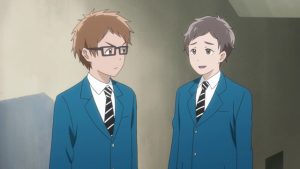 We can get it out of the way – I think Hoshiai no Sora is pretty great. I was expecting it to be really good, but it’s really good. There’s a quality to anime that have truly inspired storytellers behind them – creators who have something substantial to say and the talent to say it eloquently – that just can’t be matched through marketing savvy and opportunism. We see it in the likes of something such as Planet With and Mizukami Satoshi and we’re seeing it again here – there’s no substitute for inspiration and genius.
We can get it out of the way – I think Hoshiai no Sora is pretty great. I was expecting it to be really good, but it’s really good. There’s a quality to anime that have truly inspired storytellers behind them – creators who have something substantial to say and the talent to say it eloquently – that just can’t be matched through marketing savvy and opportunism. We see it in the likes of something such as Planet With and Mizukami Satoshi and we’re seeing it again here – there’s no substitute for inspiration and genius.
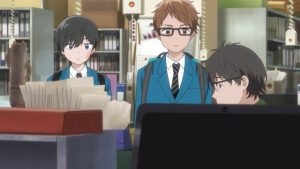 The thing with shows like Planet With and Hoshiai no Sora is that they – like Noein did – stand apart from any era. There are no tropes or trends here, and apart from the production quality itself you’d have no way of guessing what year this show aired in if you didn’t know. This is simply a story Akane Kazuki wants to tell (and has for over a decade, as it happens). There’s an honesty and integrity to storytelling for its own sake (Tsuki ga Kirei would be another prime example of this) that gives these series a heft that most simply can’t measure up to. And thank goodness they exist.
The thing with shows like Planet With and Hoshiai no Sora is that they – like Noein did – stand apart from any era. There are no tropes or trends here, and apart from the production quality itself you’d have no way of guessing what year this show aired in if you didn’t know. This is simply a story Akane Kazuki wants to tell (and has for over a decade, as it happens). There’s an honesty and integrity to storytelling for its own sake (Tsuki ga Kirei would be another prime example of this) that gives these series a heft that most simply can’t measure up to. And thank goodness they exist.
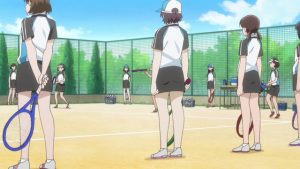 As is my wont with shows with massive casts like this, I think it’s best to credit them individually as their arcs take center stage rather than infodump a list here (there’s always Google for that anyway). Suffice to say the boys’ soft tennis club has a variety of personalities, though none of them (apart from their captain) seem especially concerned with actually getting good at the sport itself. Of note this week is a boy who’s not a member of the club in fact – Asuka Yuuta (Yamaya Yoshitaka). As we meet him he’s in the process of being bullied with some fairly standard middle-school gay-bashing, and Touma comes to his rescue. Touma scolds Yuuta that he should fight back – but Yuuta declares that he doesn’t believe in that sort of thing.
As is my wont with shows with massive casts like this, I think it’s best to credit them individually as their arcs take center stage rather than infodump a list here (there’s always Google for that anyway). Suffice to say the boys’ soft tennis club has a variety of personalities, though none of them (apart from their captain) seem especially concerned with actually getting good at the sport itself. Of note this week is a boy who’s not a member of the club in fact – Asuka Yuuta (Yamaya Yoshitaka). As we meet him he’s in the process of being bullied with some fairly standard middle-school gay-bashing, and Touma comes to his rescue. Touma scolds Yuuta that he should fight back – but Yuuta declares that he doesn’t believe in that sort of thing.
 There’s an awful lot going on in this episode, as the story advances on several fronts without ever seeming to be trying too hard. Maki proves himself to be a rather keen observer of people, and it’s he who takes it on himself to invite Yuuta into the club as a manager (he begs off actually playing) after noticing him hanging about. In fact he cuts right to the point and assesses what’s really going on here – Yuuta has a crush on Touma – and scores major points by declaring that he doesn’t give a toss who anybody likes. Would that all 14 year-old boys were as tolerant as Maki, but there are a few of them out there.
There’s an awful lot going on in this episode, as the story advances on several fronts without ever seeming to be trying too hard. Maki proves himself to be a rather keen observer of people, and it’s he who takes it on himself to invite Yuuta into the club as a manager (he begs off actually playing) after noticing him hanging about. In fact he cuts right to the point and assesses what’s really going on here – Yuuta has a crush on Touma – and scores major points by declaring that he doesn’t give a toss who anybody likes. Would that all 14 year-old boys were as tolerant as Maki, but there are a few of them out there.
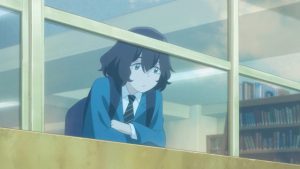 Meanwhile Mitsue continues to hover in the background as a sort of one-girl Greek chorus, providing a snarky commentary on the inanities of middle school life as she keeps an ever-vigilant watch on Maki. Mitsue is an interesting one – a budding mangaka apparently, a bit of a social outcast – but it’s hard to take her interest in Maki as anything but, well… interest. My read is that she’s a loner and saw Maki as a kindred spirit – which would explain her disquiet that he seems to be blending in with the soft tennis club (albeit in a somewhat rocky fashion).
Meanwhile Mitsue continues to hover in the background as a sort of one-girl Greek chorus, providing a snarky commentary on the inanities of middle school life as she keeps an ever-vigilant watch on Maki. Mitsue is an interesting one – a budding mangaka apparently, a bit of a social outcast – but it’s hard to take her interest in Maki as anything but, well… interest. My read is that she’s a loner and saw Maki as a kindred spirit – which would explain her disquiet that he seems to be blending in with the soft tennis club (albeit in a somewhat rocky fashion).
 As for the soft tennis itself, it gets anything but the short shrift here. This is where Takanashi Yuuichi really shines – the look of Hoshiai no Sora isn’t flashy, but the movements as Touma tutors Maki on the fundamentals of the sport are beautifully dynamic and fluid. Natural. And a natural is just what Maki is, too. He may not have played a sport at his old school but he’s an athlete just the same, one of those kids whose body seems to instinctively know what to do when they pick up a sport. He’s also possessed of a bulldog mentality and fierce competitive drive, something most of the club (again, excepting Touma) is severely lacking.
As for the soft tennis itself, it gets anything but the short shrift here. This is where Takanashi Yuuichi really shines – the look of Hoshiai no Sora isn’t flashy, but the movements as Touma tutors Maki on the fundamentals of the sport are beautifully dynamic and fluid. Natural. And a natural is just what Maki is, too. He may not have played a sport at his old school but he’s an athlete just the same, one of those kids whose body seems to instinctively know what to do when they pick up a sport. He’s also possessed of a bulldog mentality and fierce competitive drive, something most of the club (again, excepting Touma) is severely lacking.
 The dynamics of the club here are really interesting. This is a pretty laid-back group on the whole (though a varied mix still exists, as I noted) but they’re still boys. When Maki pushes and prods them, they respond – which of course is exactly what the savvy little provocateur was intending all along. They’re second-class citizens in the school, forever in the shadow of the girls’ team, stuck with the leftover tennis balls and the odd days on the courts. They’ve accepted this for so long that it’s second nature to them, but it’s not first or second or any part of Maki’s nature – he’s a contrarian and a combative kid, and their comfort zone is something he wants nothing to do with.
The dynamics of the club here are really interesting. This is a pretty laid-back group on the whole (though a varied mix still exists, as I noted) but they’re still boys. When Maki pushes and prods them, they respond – which of course is exactly what the savvy little provocateur was intending all along. They’re second-class citizens in the school, forever in the shadow of the girls’ team, stuck with the leftover tennis balls and the odd days on the courts. They’ve accepted this for so long that it’s second nature to them, but it’s not first or second or any part of Maki’s nature – he’s a contrarian and a combative kid, and their comfort zone is something he wants nothing to do with.
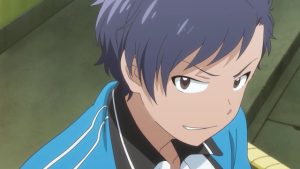 I love all the little details Akane introduces here – the sensei’s love of candy, Maki’s decision to wear a visor (which sums up his defiant personality perfectly), the little gestures of support between the boys when they come under attack from the tactless Maki. It adds color and realism to the story in a big way – and of course the elephant in the room here is what’s going on at home for Maki (and maybe Touma too). Maki’s aggressively blunt personality surely formed in part as a reaction to the abuse he received from his father – a father who Maki’s mother is still very much convinced (to the tune of a restraining order) is a threat to her son. None of these story elements exist in a vacuum – they all impact each other. And that so much has been introduced already suggests that Akane (as usual) is planning to tell a story of considerable ambition and depth.
I love all the little details Akane introduces here – the sensei’s love of candy, Maki’s decision to wear a visor (which sums up his defiant personality perfectly), the little gestures of support between the boys when they come under attack from the tactless Maki. It adds color and realism to the story in a big way – and of course the elephant in the room here is what’s going on at home for Maki (and maybe Touma too). Maki’s aggressively blunt personality surely formed in part as a reaction to the abuse he received from his father – a father who Maki’s mother is still very much convinced (to the tune of a restraining order) is a threat to her son. None of these story elements exist in a vacuum – they all impact each other. And that so much has been introduced already suggests that Akane (as usual) is planning to tell a story of considerable ambition and depth.
ED: “Kago no Naka no Bokura wa (籠の中の僕らは)” by AIKI


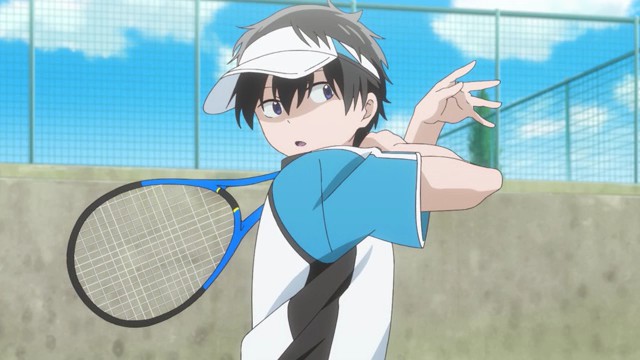

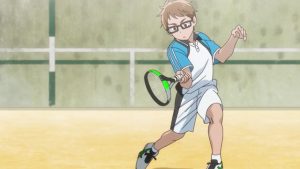

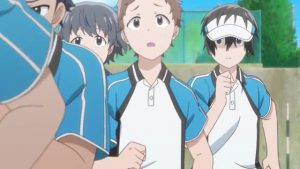
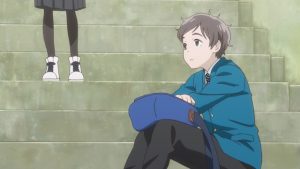


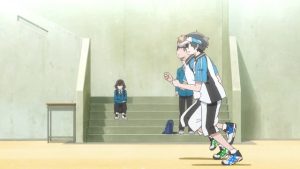
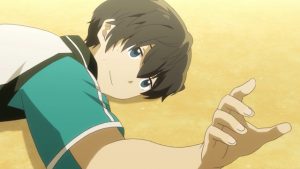
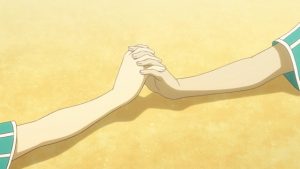


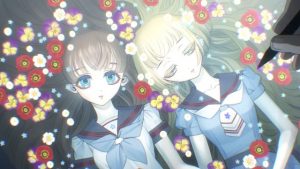

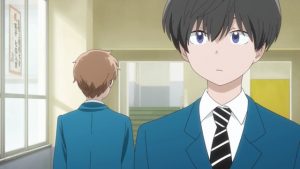
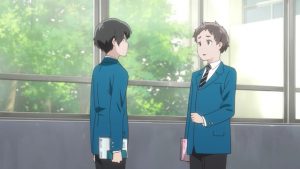
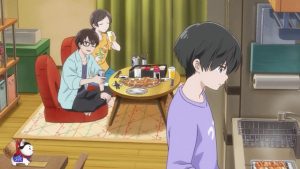
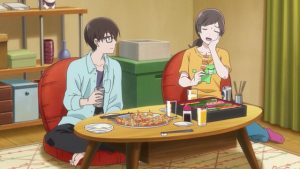
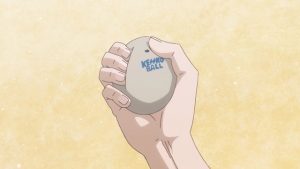

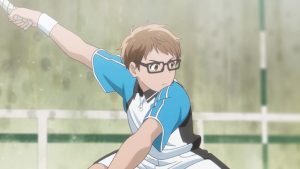


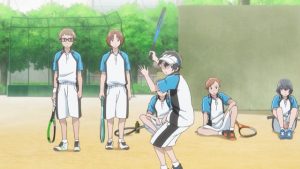
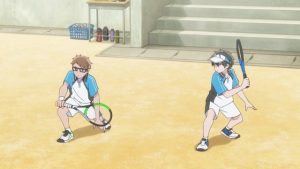
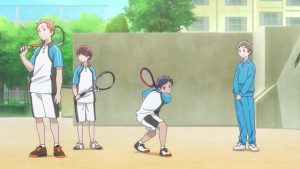
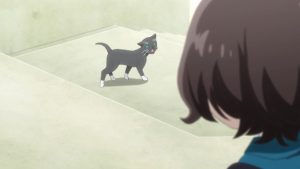

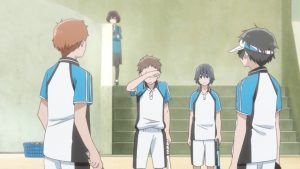
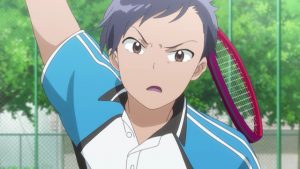
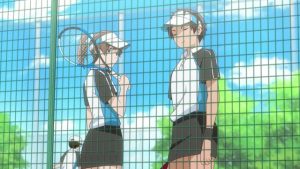
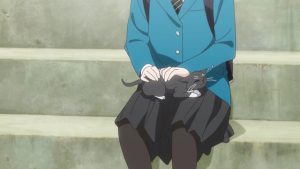
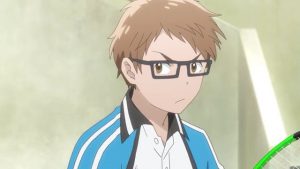
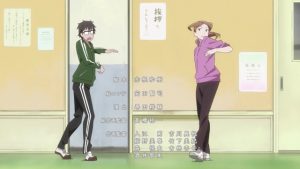
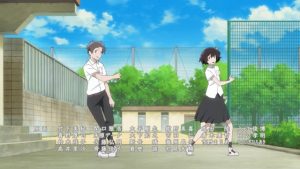

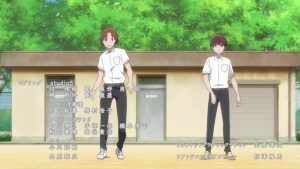
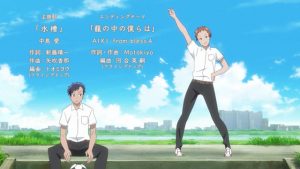
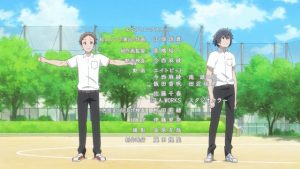

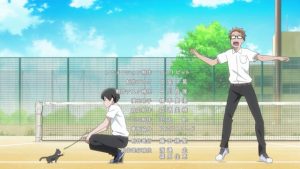

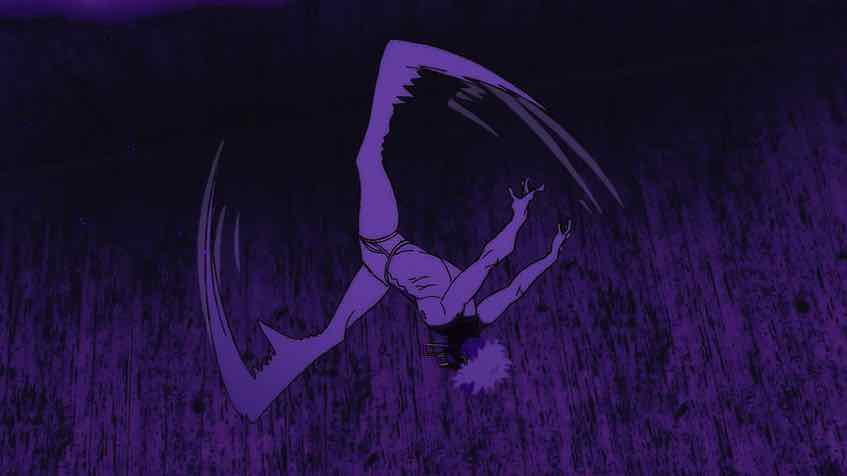
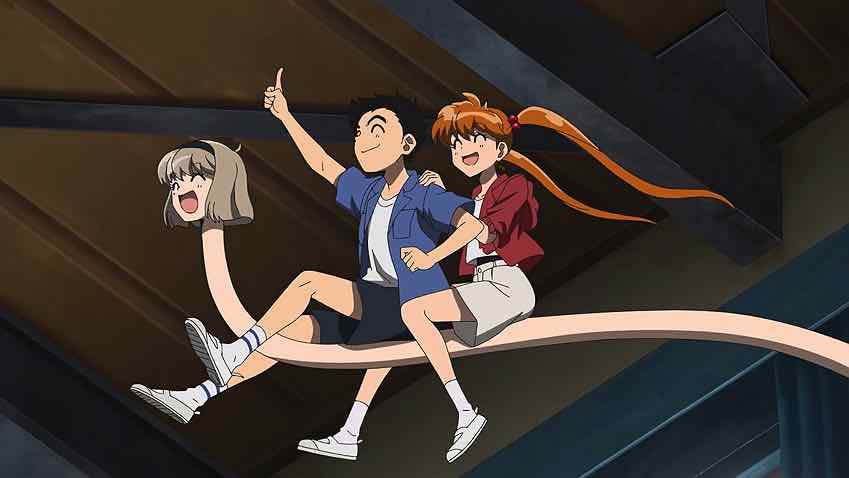
Nadavu
October 18, 2019 at 11:32 pmI’m watching more shows this season than I have in years, and so far Hoshiai no Sora takes the lead as my favorite. I don’t have much to add to your post, Enzo, other than the ED sequence had me in stitches.
Guardian Enzo
October 18, 2019 at 11:44 pmYes, loved the ED sequence. Absolutely gleeful (and the seitokaichou can really dance).
leongsh
October 18, 2019 at 11:54 pmThis series is exceeding my expectations as well. I was expecting good but so far, it has been very, very good. There’s a lot of moving parts – in the story, in the character building, and in the animation. There’s a lot of thought that has gone into it. It’s clear that this is a labour of love.
While the ED visuals are a delight to watch, it also serves another purpose to show us in another way who the various characters are as well. Well thought-out.
dc22
October 19, 2019 at 2:57 amSo it’s hinted that not just Yuuta, but also Maki and Touma are gay? Can’t say I didn’t see that coming, but it was sudden. Even wierder considering the last time they met they were small kids without a concept of sexuality.
Guardian Enzo
October 19, 2019 at 8:23 amI don’t see that as being strongly hinted as of yet. It’s possible but I don’t see any real evidence of it yet.
Simone
October 19, 2019 at 10:00 pmNah, I don’t think the implication is there for Maki and Touma, just because they held hands. Might be at some point in the future, but for now I’d hold judgement.
kiwi
October 21, 2019 at 11:34 amI just interpreted that as Maki being pretty comfortable with who he is as a person– the visor, how mature he was interacting with Yuuta. Part of that surely comes from the fact that he has had to grow up quickly as a result of the domestic abuse :/
And just some food for thought: a lot of kids realize they’re not straight early on in childhood far before a “concept of sexuality” comes into the picture. I’m not saying that’s what’s the case here, but I mean, 3rd graders get crushes on each other. It’s not abnormal.
Guardian Enzo
October 21, 2019 at 11:38 amI interpreted Maki’s actions exactly the same way. That might not turn out to be the case but I don’t see any reason to think otherwise yet.
kiwi
October 21, 2019 at 11:20 amI really love where this is going– it’s an inexplicably refreshing show! I love that the girls aren’t reduced to mere eye candy (as might happen in other sports anime) and have clear connection to the main plot; the seitokaichou, girl’s tennis team, and Mitsue all are distinct characters with their own motivations. I love that Maki’s mother has another adult (boyfriend?) that she can confide in about her horrible ex, and he seems to be genuinely concerned for Maki.
I especially love the character design (i can’t really describe it but the characters feel /real/ instead of like caricatures). Part of that is definitely helped by the detailed and interesting character animation– even for random background characters. So much personality is conveyed in the animation, which is semi-rare nowadays. I love it when shows take little risks in terms of animation–(the brief snippets of black/white animation during the running sequence being an example) and am excited to see more
(And the ED is a real joy to watch lol)
Guardian Enzo
October 21, 2019 at 11:40 amAll this is no accident. It’s the product of a brilliant writer and a first-rate AD/CD.
I think the characters feel real because they’re not templates. They’re a mix of different body and facial types, not unrealistically pretty the way anime teens often are. Most of them are a little pudgy or scrawny or generally “in-between” the way middle schoolers tend to be.